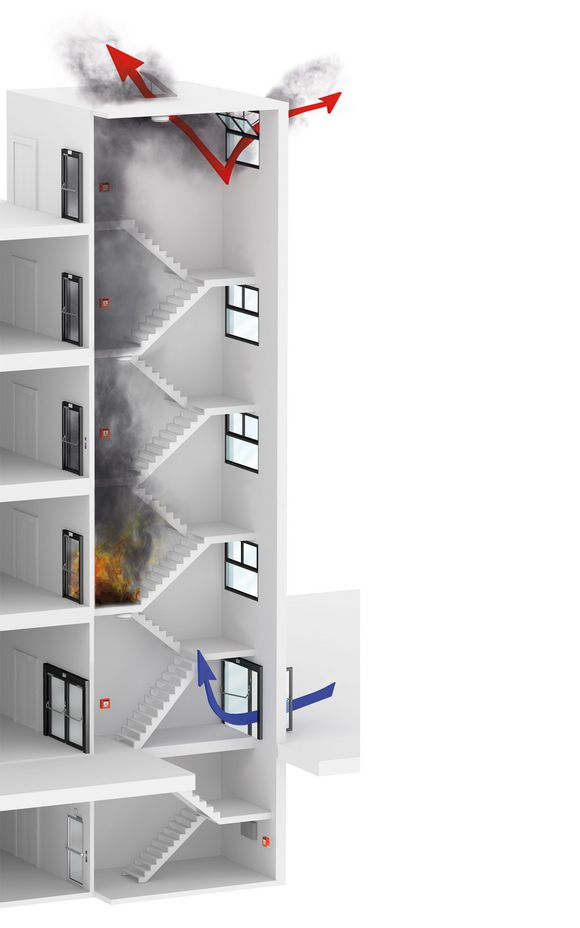Components of a SHEV system
Gretsch-Unitas offers you a wide assortment of mutually compatible system components – from electric motor-driven chain and spindle drives through to SHEV central control systems and an extensive range of accessories. Complete opening systems for Bottom-Hung, Top-Hung as well as inward and outward opening Side-Hung windows are also included.
SHEV systems are not only suitable for smoke exhaust in the event of fire, they can also be used for everyday ventilation which means they cover virtually all possible application requirements.
Electric control unit (SHEV central control unit)
The electric control unit of the smoke and heat exhaust ventilation is performed by the SHEV compact control unit. This is equipped with extensive setting and application functions as well as offering clear status messages via LED displays. Windows, smoke flaps and light domes are opened or closed by electric drives.
The ventilation function is controlled via a ventilation push-button, rain/wind controller or time switch, and in the event of an emergency it is controlled manually via a SHEV push-button or automatically via smoke or heat detectors. In addition, alarm signals can be connected.
NSHEV
In natural smoke and heat exhaust ventilaton devices (NSHEVs), the window element is tested and certified together with the drive as an entire system in accordance with EN 12101-2. Gretsch-Unitas offers NSHEV system solutions with tested, certified components for timber profiles and Euro-groove aluminium profiles from leading system suppliers in all conventional opening types.






